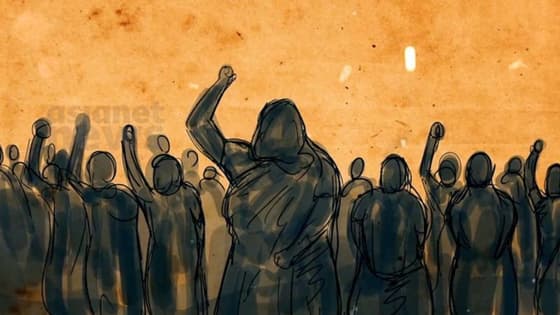
India@75: Backward castes who fought for Independence
Only recent studies revealed that a large bunch of backward castes and their women were active participants in the first Indian war of Independence in 1857.
Everyone knows about the brave Rajas, Ranis, Nawabs and Begums who led the first Indian war of independence of 1857. Only recent studies revealed that a large bunch of backward castes and their women were active participants in that upsurge.

All these years, they had only lived in fables and legends. These Bahujan Women Bravehearts include Rani Avanti Bai, Mahabiri Devi, Jhalkari Devi, Uda Devi, and Ashadevi.
If Avanti Bai was the Lodhi Rajput queen of Ram Gargh, Mahabiri came from the lowest scavenger caste, the Bhangis. Jhalkari was from the Kori caste, Uda Devi a Pasi, and Ashadevi a Gurjari, all low down in the caste hierarchy.
Also watch: India@75: The unknown story of women freedom fighters from Assam
Avanti, the wife of Raja Vikramaditya Lodhi of Ramgargh in today's Madhya Pradesh, was adept in the kingdom's administrative and even military affairs. When the revolt broke out in 1857, Avanti asked her subjects not to pay taxes to the East India Co. When the British unleashed repression, Avanti led an army of 4000, attacked Company outposts, and killed many. As she was to be captured, Avani took the sword from her bodyguard and stabbed herself to become a martyr.
Mahabiri was born in the scavenger caste of Bhangi at Muzaffarnagar in Uttar Pradesh. She had displayed brilliance and daring even as a child. As a young woman, Mahabiri formed an organisation to protect women and children from caste and sexual harassment. Mahabiri trained its members in weaponry and horse riding. When the war against the British broke out, Mahabiri's army of Bahujan Women launched lightning attacks on British camps. She was captured and shot dead by the British army after initial advances.
Also watch: India@75: Group of revolutionary women who took arms against the British empire
Jhalkari Devi's husband was a soldier in the army of the brave Rani of Jhansi, Lakshmi Bai. Puran taught his young wife to ride horses, wrestle and even in firing. Rani deputed Jhalkari to organise a women's army named Durga Dal. When the Jhansi fort was besieged, Jhalkari helped the Rani to escape. Jhalkari, a Gurjari, had a striking resemblance to the Rani, which fooled the British many times.
Uda Devi belonged to the Pasi community and was associated with Begum Hazrat Mahal, the queen of Oudh, one of the prominent leaders of 1857. Uda was at the forefront of forming a women's army contingent for the Begum. When the East India Company's army assaulted Sikandar Bagh, Uda Devi fought along with the Begum. According to legends, Uda climbed up a peepul tree and shot dead many.
Also watch: India@75: Jamnalal Bajaj, the industrialist who fought for India's freedom